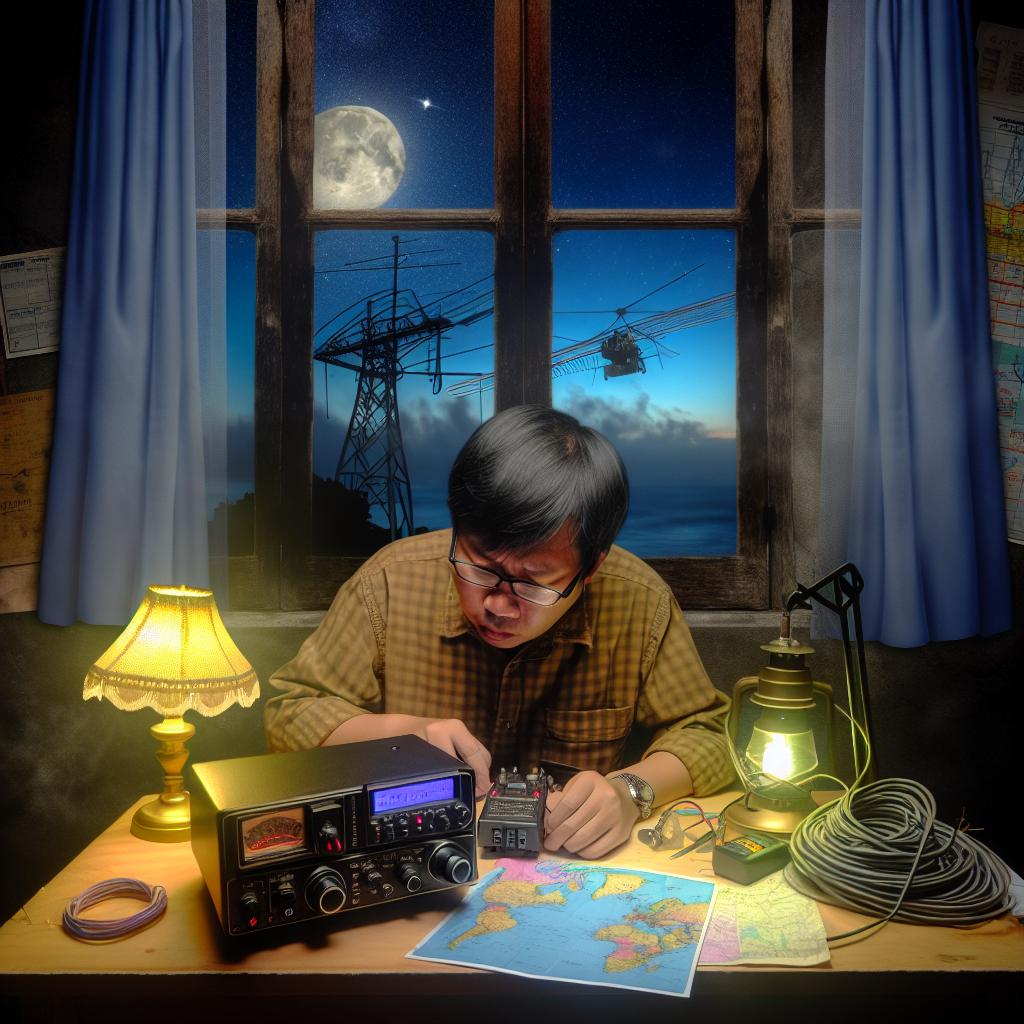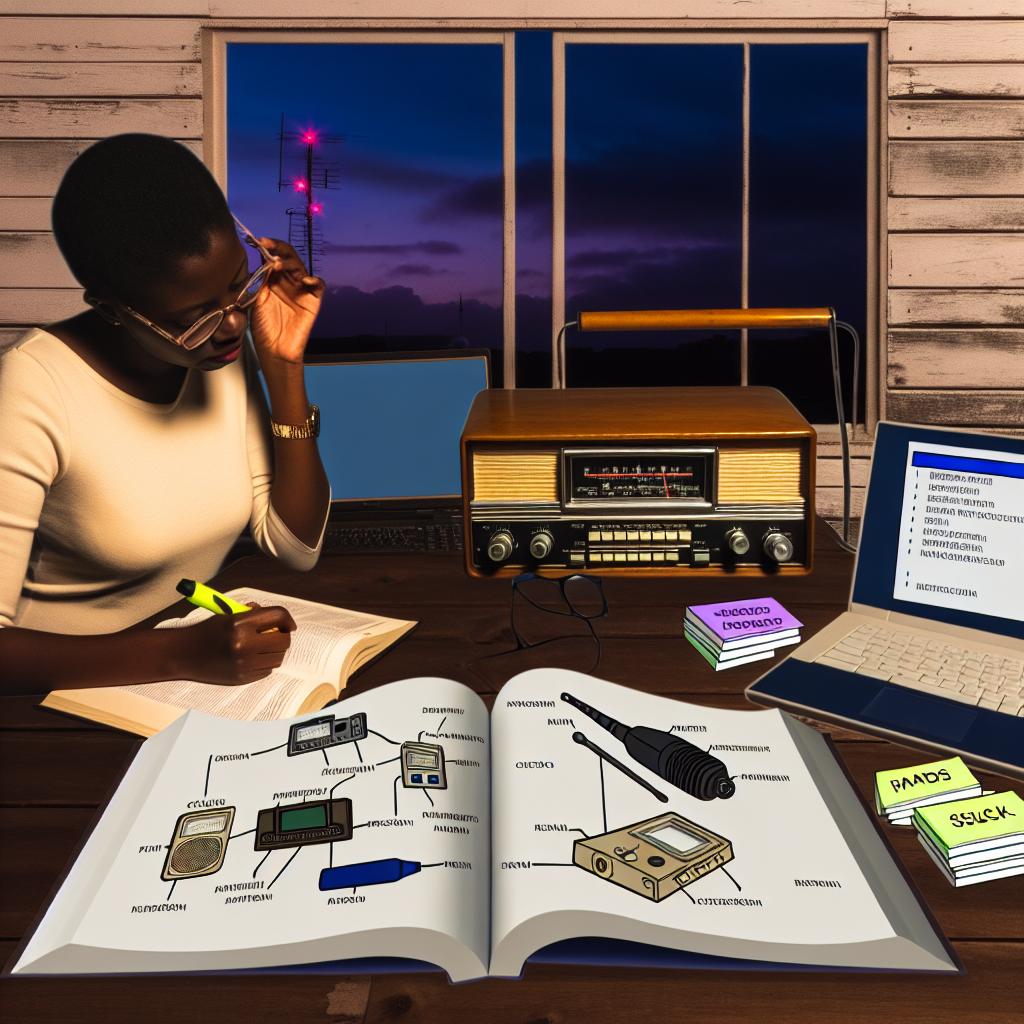The Basics of QRP Operation
QRP operation is a distinctive method used by amateur radio enthusiasts where the primary focus is on transmitting at low power levels, typically 5 watts or less. The term “QRP” is derived from the Q-code, which is a standardized set of abbreviations initially developed for Morse code communication. In particular, “QRP” means “reduce power.”
Why Use Low Power?
Operating with low power presents a technical challenge that many radio enthusiasts find appealing. Achieving clear communication over long distances without relying on high power requires skill, patience, and knowledge of radio propagation.
Minimal Interference
Using lower power results in less interference with other signals, which is particularly beneficial in crowded radio bands. It also complies with guidelines to keep bands free from unnecessary congestion.
Efficiency and Portability
Low-power radios are often more energy-efficient, which is crucial for portable operations, such as field days or emergency situations. The minimal power requirements allow for smaller and lighter equipment that can be powered by compact battery sources.
Equipment for QRP
QRP operators have access to specialized equipment specifically designed for low-power operations. Several manufacturers provide transceivers that cater specifically to the needs of the QRP community.
Transceivers
Many of the transceivers used for QRP are compact, allowing for easy transport and use in the field. Well-known QRP transceivers include models from Elecraft, Yaesu, and other manufacturers who design radios with optimal power efficiency.
Antennas
Antenna selection is another critical aspect. Operators often use simple wire antennas, dipoles, and end-fed antennas that can be erected quickly and effectively even in remote locations. Proper antenna setup often makes a significant difference in overcoming the limitations imposed by low power.
Alternative Antenna Options
While wire antennas and dipoles are quite popular, some operators also experiment with vertical antennas or loop antennas, which can offer different advantages depending on the specific communication need. For instance, vertical antennas can be more effective in space-constrained scenarios or for achieving omnidirectional coverage.
Technique and Skill Development
The art of QRP is not merely about equipment but also encompasses a wide range of techniques and skills. Operators must be adept at understanding and utilizing propagation conditions, employing efficient operating strategies, and making optimal use of available resources.
Propagation Understanding
Knowledge of radio wave propagation is essential in QRP operations. Factors like time of day, weather, and sunspot activity can affect signal reach and clarity. Operators who master the art of reading and predicting these conditions are better placed to achieve longer communication ranges.
Learning the Science of Propagation
To enhance their understanding of propagation, many QRP operators study ionospheric conditions, attend workshops, or participate in online courses. This scientific approach helps operators make informed decisions about when and how to transmit signals, maximizing their chances of successful communication.
Operational Practices
QRP enthusiasts often emphasize the importance of listening more than transmitting. Patience and persistence are critical traits for successful QRP operations. Competent QRP operators also practice precision in their tuning and decoding of weak signals.
Mastering Listening Skills
The ability to recognize faint signals amidst background noise is a finely honed skill that sets accomplished operators apart. Techniques such as carefully adjusting filters and utilizing noise-canceling features on their transceivers enhance the operators’ ability to discern weak signals.
Community and Competitions
QRP operation has fostered a vibrant community, with many enthusiasts participating in contests and activities worldwide. These events are opportunities for operators to test their skills and innovations against others.
Contests and Clubs
There are numerous clubs and contests dedicated to QRP operations. Events like the ARRL Field Day often include categories for QRP stations that challenge participants to make the most out of their low-power setups. Additionally, dedicated QRP contests encourage operators to engage with one another and enhance their techniques.
Community-Building through Collaboration
Beyond formal contests, many QRP operators collaborate informally by organizing “sked” sessions where they agree upon a specific time and frequency to connect with each other. These collaborations are a testament to the camaraderie that exists within the QRP world, allowing operators to share experiences and learn from one another.
Growth and Evolution of QRP Activities
The QRP community continues to grow as technology evolves. Innovations such as digital modes and software-defined radios have allowed enthusiasts to push the boundaries of what is possible with low-power transmissions, constantly elevating the art and science of QRP operation.
Additional Resources
For those interested in exploring more about low-power amateur radio, several online resources and forums discuss techniques, equipment, and experiences. Enthusiasts often share their knowledge and insights, providing valuable information and support for newcomers and seasoned operators alike. For more information, you can visit resources like the American Radio Relay League (ARRL) QRP page.
Conclusion
QRP operation embodies the spirit of amateur radio: experimentation, exploration, and communication. By focusing on low-power transmissions, operators not only hone their technical skills but also foster a deep connection with the global community of amateur radio enthusiasts. This focus on skill over sheer power resonates with operators seeking a fulfilling and challenging radio experience. As interest in sustainable and portable communication grows, QRP operation remains a vibrant and integral part of amateur radio culture, offering a rich avenue for those inclined towards innovation and collaboration in the world of radio communication.



